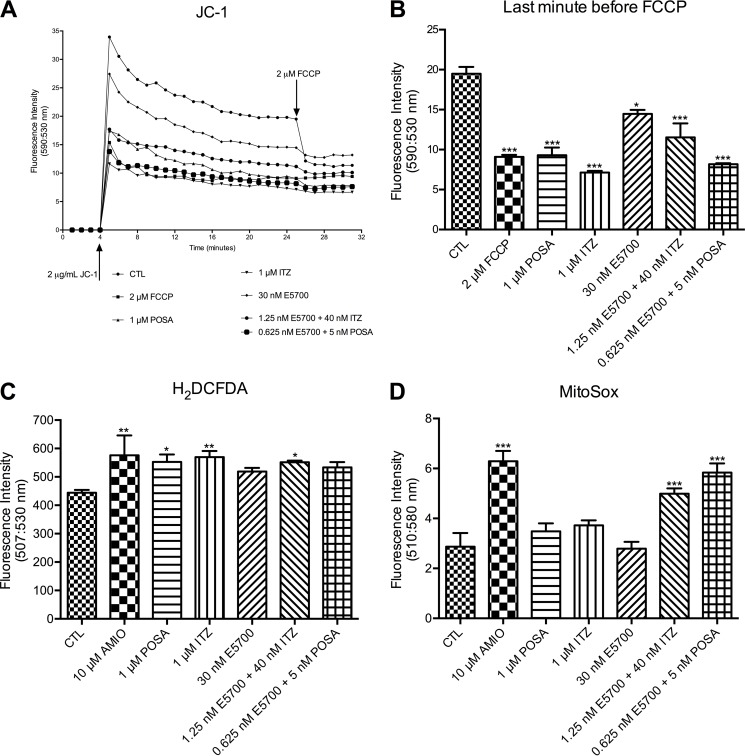FIG 8.
Analysis of the mitochondrial transmembrane electric potential (A and B) and intracellular ROS (C) and superoxide production (D) in L. amazonensis promastigotes from the control group or treated with E5700, POSA, or ITZ, alone or in combination, for 48 h of treatment. (A) The Δψm values were evaluated over 26 min, before addition of 2 μM FCCP to abolish the mitochondrial membrane potential. The decrease of the Δψm value indicates a collapse in the mitochondrial transmembrane potential. (B) Results at the last minute before addition of 2 μM FCCP, showing the Δψm. It is possible to observe that the treatment with 1.25 nM E5700 plus 40 nM ITZ or of 0.625 nM E5700 plus 5 nM POSA for 48 h caused a strong effect on the Δψm, similar to those caused by FCCP. (C) Production of ROS was measured in the cells. Control and treated cells were incubated with H2DCFDA, and the fluorescence intensity was quantified via a microplate reader. The treatment was able to increase ROS production. (D) Analysis of superoxide production in the treated cells for 48 h. A significant increase was observed just after the treatment with two combinations, 1.25 nM E5700 plus 40 nM ITZ versus 0.625 nM E5700 plus 5 nM POSA. These data suggest a potent synergistic effect of the inhibitors on the mitochondrial physiology. The experiments were performed three times, each time in triplicate, and the results shown are representative of these experiments. *, P < 0.05; **, P < 0.01; ***, P < 0.001.

